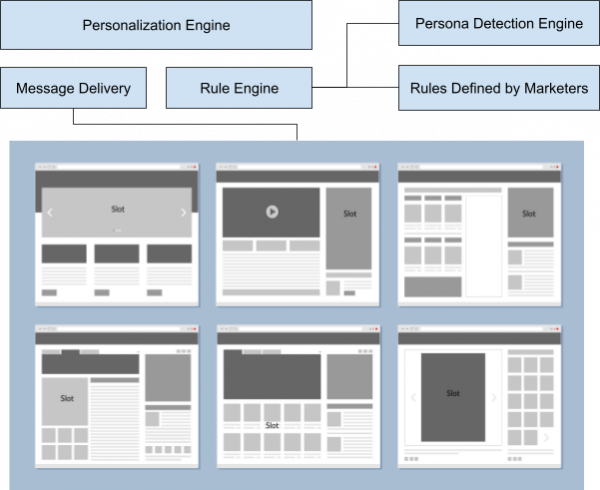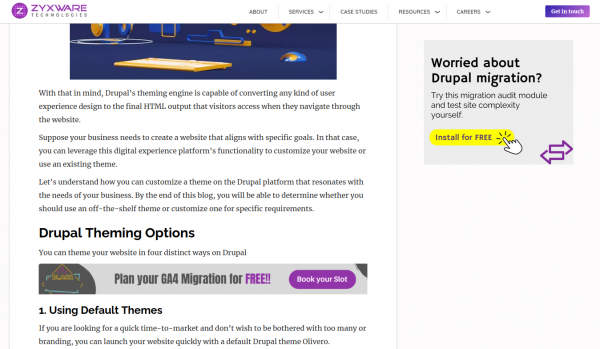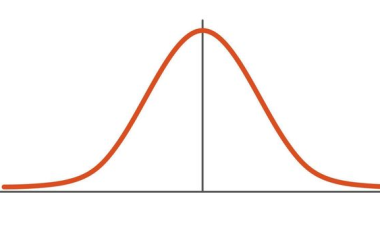Website Personalization: Our Attempt to Design a Personalized Digital Experience Engine
Introduction
Personalizing a website's content and user experience is one of the most effective ways to engage visitors and convert them into customers. By tailoring the experience to match individual users' preferences, interests, and behaviour, you can create a sense of relevance and connection that will keep visitors on your site longer, increase the likelihood that they'll take the desired action, and encourage them to return in the future.
Website Personalization: Applications
Website personalization has many applications that can improve customer acquisition, engagement, and retention.
By tailoring the content and user experience to match visitors' specific interests and needs, businesses can use personalization to increase the chances that visitors will fill out a contact form or request more information, resulting in more leads for the company.
E-commerce companies can use personalization to display the most relevant products to users, increasing the chances of making a sale.
Personalized experiences can also be used to improve the effectiveness of content, specifically by news and media organizations. Media businesses can increase engagement and reduce bounce rates by showing different content to visitors based on their interests and behaviour.
Overall, personalization can be applied to various touchpoints in a business by utilizing the data and behaviour of the users to improve the overall user experience and increase the chances of conversion.
Our Personalization Journey
For the past few months, we have been building an end-to-end website personalization machine with all these capabilities. Instead of reinventing the wheel, we make this on top of Drupal (it is also easily portable to WordPress) and integrated with multiple systems, including Hubspot, Optinmonster, Google Analytics, Looker Studio, Mautic and Apache Unomi. The initial alpha is deployed to our website. The messages that you see in the articles we have published are coming from the message delivery system. The CTAs are deployed via Hubspot and Optinmonster.
The architecture of the system consists of

Persona Detection Engine
This system detects the visitor's persona, including demographic information, browsing history, and other signals from their interactions on the site. It helps to understand the visitor's identity and interests, which is essential for delivering personalized content.
Personalization Engine
This core decision-making system provides a set of functions to the rule engine. It takes input from the Persona Detection Engine and other sources. It generates recommendations for the messages to be delivered to individual users.
Message Delivery System
The message delivery system consists of slots and content visible to the visitor. It is responsible for displaying personalized messages to the user in real time, considering the rules and recommendations provided by the personalization engine.
Rule Engine
This component determines whether a message should be displayed to a user. The Rule Engine takes inputs from the persona detection engine and personalization engine. It applies the rules set by the marketer or the business to decide whether a message should be displayed.
Reports and Analytics
The system should have a tighter integration with analytics and visualization systems to track the performance of the personalized messages, including the number of impressions, click-through rate, and funnel visualization. This data helps the marketer understand how well the personalization system works and make data-driven decisions to improve overall performance.

The rule engine we have implemented is currently able to identify
- Where the visitor comes from - Referral, Source, Geography, Advertisement campaigns, Email campaigns
- Repeat visitor
- The interest of the visitor is based on the content they have accessed
- Whether the visitor accessed any landing pages but did not submit the form
- Whether the visitor submit any form on the website before?
- Whether the visitor is in a specific topic cluster?
- And many more
Currently, the system can display content from tools like Hubspot and OptinMonster, HTML content, and Drupal Blocks based on user behaviour and rules defined by the marketers.
The goal is to design a modular and integration-ready system where marketers can integrate with any customer data portals or AI-based persona detection systems.
We are working on an end-to-end demo for this system on our website. Let me know if you want an early preview or more details about this project.
FAQ on Website Personalization
Website personalization is tailoring a website's content and layout to individual users based on their preferences, behaviour, and demographics. This can include displaying different content or images based on the user's location, recommending products based on their browsing history, or adjusting the website's layout based on the user's device.
Website personalization can help businesses increase customer engagement, improve conversion rates, and increase customer loyalty. By providing a more personalized experience, businesses can make their website more relevant and valuable to users, leading to increased sales and repeat customers.
Website personalization is typically implemented using cookies or browser storage to track user behaviour and preferences. This data is then used to adjust the content and layout of the website in real time. A good personalization engine can help marketers create personalization rules and deliver messages to the pages. There can be other systems like a persona detection engine that can tag the visitor to a persona, and the rule engine can deliver messages targeting a specific visitor persona.
Additionally, businesses can use marketing automation software, customer relationship management (CRM) systems, and customer data portals (CDP) to collect and analyze data on customer behaviour and pass the details to the personalization engine.
Some examples of website personalization include:
- Showing different content or offers based on the user's location
- Recommending products based on the user's browsing history
- Adjusting the layout of the website based on the user's device
- Providing personalized product or service recommendations
- Customizing the website's navigation based on the user's preferences
Yes, website personalization can raise privacy concerns by collecting and using user behaviour and preferences data. Businesses need to be transparent about their data collection practices and provide users with clear options for controlling their data. Additionally, businesses should comply with all relevant data privacy laws and regulations. If the system uses first-party data and does not store personal information like IP address, Emails, etc., to connect the browsing pattern with an identifiable individual, there is not much trouble.
Website personalization can benefit lead generation by providing users with a more personalized and relevant experience. Businesses can increase the likelihood that users will convert into leads by showing targeted content, offers, and calls to action based on user behaviour and preferences. Additionally, personalized forms, landing pages, and product recommendations can help to streamline the lead-generation process and improve conversion rates.
Website personalization improves user experience by providing a tailored and relevant experience for each user. Businesses can make the website more valuable and engaging by displaying content and offers most relevant to the user. Additionally, personalized navigation, layout and design can help to make the website more user-friendly and easy to navigate. Overall, website personalization helps create a more engaging and satisfying experience for users, leading to increased customer satisfaction and loyalty.
Website personalization can improve lead nurturing by providing a more personalized and relevant experience for leads throughout the sales process. Businesses can increase the likelihood that leads will convert into customers by using data on lead behaviour and preferences to display targeted content, offers, and calls to action. Additionally, personalized product recommendations and lead-nurturing emails can help to keep leads engaged and interested in a business's products or services.
Website personalization can improve customer retention by providing customers with a more personalized and relevant experience. By using customer behaviour and preferences data to display targeted content, offers, and calls to action, businesses can increase the likelihood that customers will return to the website and make repeat purchases. Additionally, personalized product recommendations and customer retention emails can help to keep customers engaged and interested in a business's products or services.



